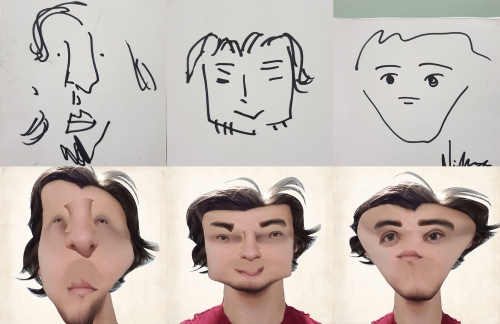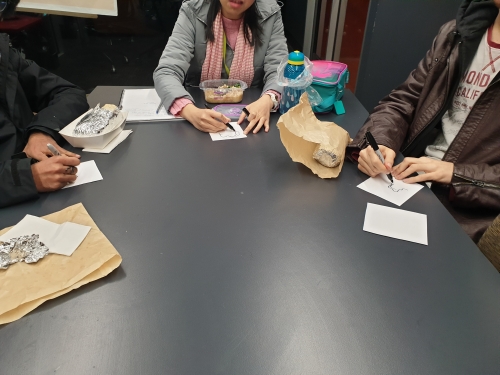
Theme: Play and Observation.
Method: Relational art, Observation, Representation, Photographic record, Reinterpretation.
Context: Many artists have portrayed themselves, whether to endure through history, or to record their moods or the effect of time on themselves. But, are those representation showing us who they really were? How they really look like? Our mind can play us some tricks when we are trying to represent how we perceive what surround us, especially if we are looking at ourselves. This exercise tries to explore and break through the wall builded up by the ego, and through play, get to take a sneak peek beyond the shadows to the realm of being.
Response:
To me, creating a self-portrait is one of those opportunities where you get the chance to be very brave or very coward. You can be so sincere and real that you might be afraid of it, or it can be just a mask of how you would like to see yourself. We don't really perceive ourselves as we are and expose our true persona to the world could be terrifying.
I've done lots of self-portraits... I like to stop once in a while and look at myself and make a representation of what I find, how I feel. However, I never felt that I did a really good job as I couldn't stop thinking about if what I did is really me or if I'm just feeding a monstrous ego.
While writing all this I couldn't stop thinking about one of my lecturers from the Visual Arts Degree who had a really interesting idea about the Self, he used to say that there are 3 ideas of it: How we perceive ourselves, how people perceive ourselves and how we really are. This premise has been stuck in my head for years and it always brings back Plato's allegory of the cave.
Can I represent myself as I really am? Can I even see myself as I really am? How does everybody else see me? How do I really look like?
Out of these questions, the idea for a relational art experiment (game) was born. It consisted of approaching to 10 people from the studio whom I haven't interacted with before and ask them to do a portrait of me within 10 seconds. Then, I will try to do a self-portrait based on some of the responses from the exercise using an actual photography of my face, trying to make my features look as close as the drawings selected. I decided to choose people which I've had almost no contact at all before to make sure that they don't have any kind of mental image of me that might affect how the see me for the 1st stand. Of course, there were 3 exceptions. The 10 seconds rule propose a challenge immediately to the participant and it triggers the necessity to observe carefully at the model, my big head in this case, to capture and abstract the most relevant features for them in order to represent them in such a short amount of time. All the results were very funny and interesting.
It surprised me how some features I think are present in my face can be noticed in most of the drawings, such as my block/square shaped head, and at the same time I found really interesting how other features that I think are relevant in my face were not present such as my eyebrows, big eyes or big forehead.
Definitely a very fun and revealing exercise.
About This Work
By Adrian M.M.
Email Adrian M.M.
Published On: 27/07/2019





